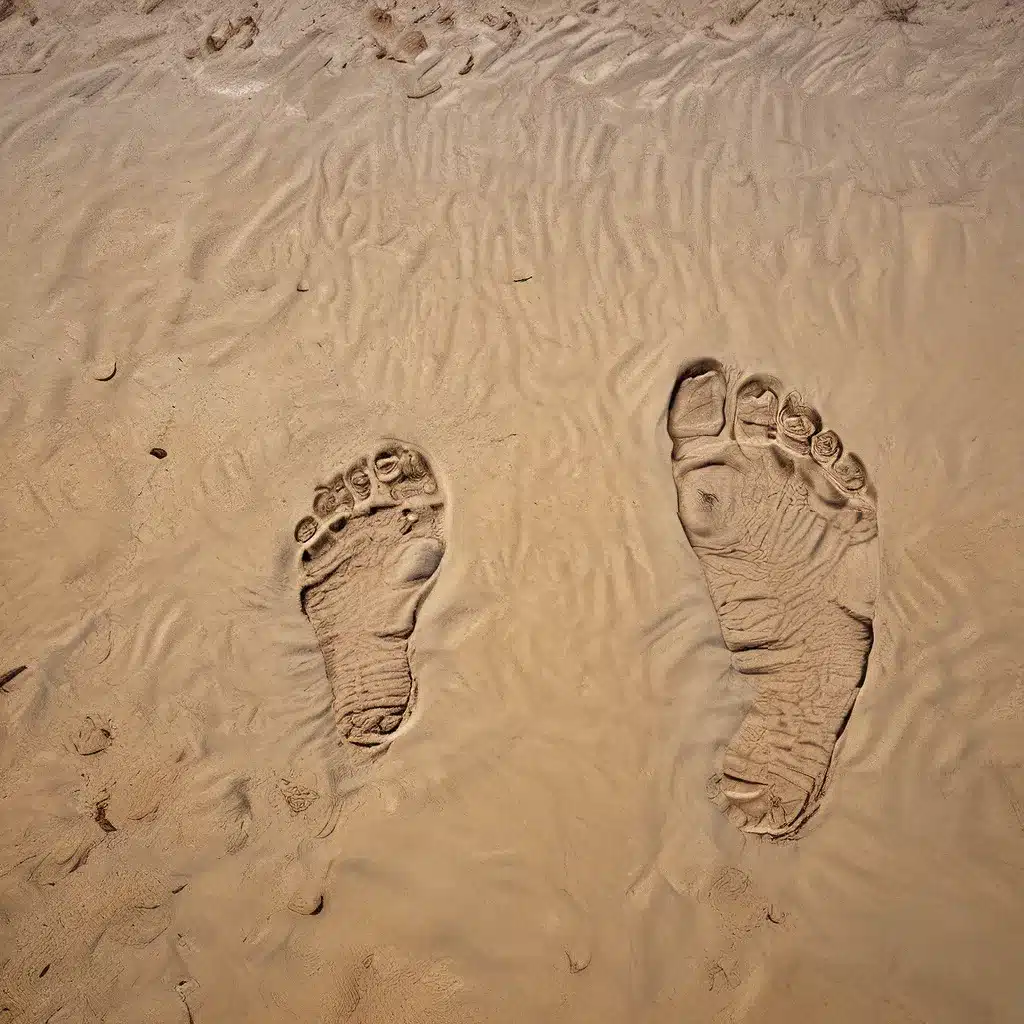
Uncovering the Mysteries of Ancient Trackways
The Triassic period, a geological era spanning from approximately 252 to 201 million years ago, was a time of remarkable transformation in the history of life on Earth. As the world emerged from the mass extinction event that marked the end of the Permian period, a new era of evolution and diversification began to take shape. Among the most intriguing remnants of this bygone era are the enigmatic footprints left behind by the inhabitants of the Triassic world.
These ancient trackways, preserved in the geological record, have become a subject of intense fascination for paleontologists and archaeologists alike. The discovery and analysis of these footprints have provided invaluable insights into the behaviors, adaptations, and diversity of the Triassic fauna, shedding light on a period that is often overshadowed by the more well-known Jurassic and Cretaceous eras.
Exploring the Triassic Trackways
One of the most significant Triassic trackway discoveries in recent years was the unearthing of a massive footprint site in southwestern Poland. This remarkable find has been described as a “dinosaur dance floor,” with hundreds of individual footprints preserved in the rock, offering a glimpse into the world of the Triassic.
The Polish trackway site has yielded a wealth of information about the behaviors and locomotion of the Triassic’s dominant land vertebrates, the archosaurs. These ancient reptiles, which include the ancestors of modern crocodiles and pterosaurs, as well as the dinosaurs, have left behind a diverse array of footprints, each with its own unique characteristics.
Deciphering the Triassic Footprints
By carefully analyzing the shape, size, and distribution of these footprints, paleontologists have been able to reconstruct the movements and activities of the Triassic’s inhabitants. For example, the discovery of trackways exhibiting synchronized footfall patterns has led to the hypothesis that these ancient creatures may have engaged in herd-like behaviors, similar to those observed in modern-day animals.
Furthermore, the diverse range of footprint sizes found at the Polish site has provided clues about the population structure and age distribution of the Triassic’s archosaur communities. Larger footprints likely belonged to adult individuals, while smaller prints may have been left by juveniles or smaller species, offering a glimpse into the complex ecological relationships of the time.
Unraveling the Triassic Puzzle
The study of Triassic trackways is not limited to the Polish site, however. Across the globe, paleontologists have uncovered a rich tapestry of footprint-bearing formations, each with its own unique insights to offer about the ancient world. In North America, for example, researchers have discovered extensive trackway assemblages that provide evidence of the diverse tetrapod fauna that inhabited the region during the Triassic.
These trackways, combined with the wealth of fossil evidence from the period, have allowed scientists to piece together a more comprehensive understanding of the Triassic ecosystem and the evolutionary trajectories of its inhabitants. From the emergence of the first dinosaurs to the rise of the crocodilian lineage, the Triassic trackways have become a crucial window into a pivotal moment in the history of life on Earth.
Unraveling the Mysteries of the Triassic
As the study of Triassic trackways continues to evolve, new theories and discoveries are constantly emerging, challenging our existing understanding of this ancient world. For instance, recent research has suggested that some of the footprints previously attributed to dinosaurs may actually have been left by non-dinosaurian archosaurs, highlighting the need for ongoing scientific inquiry and reinterpretation of the evidence.
Moreover, the discovery of trackways in unexpected locations, such as the Triassic of Brazil, has prompted researchers to reevaluate their understanding of the geographic distribution and dispersal of Triassic tetrapods, further underscoring the complexity and dynamism of this pivotal period in Earth’s history.
Connecting the Past to the Present
As we continue to unravel the mysteries of the Triassic, it becomes increasingly clear that the study of these ancient trackways is not just a pursuit of academic curiosity, but a vital link between the past and the present. By understanding the behaviors, adaptations, and relationships of the Triassic’s inhabitants, we can gain valuable insights into the evolutionary processes that have shaped the world we inhabit today.
Moreover, the preservation and interpretation of these trackways have become crucial components of our efforts to protect and conserve the natural heritage of our planet. As we explore the Lost Kingdoms of the past, we are not just uncovering the secrets of a bygone era, but also forging a deeper connection with the natural world that sustains us.


